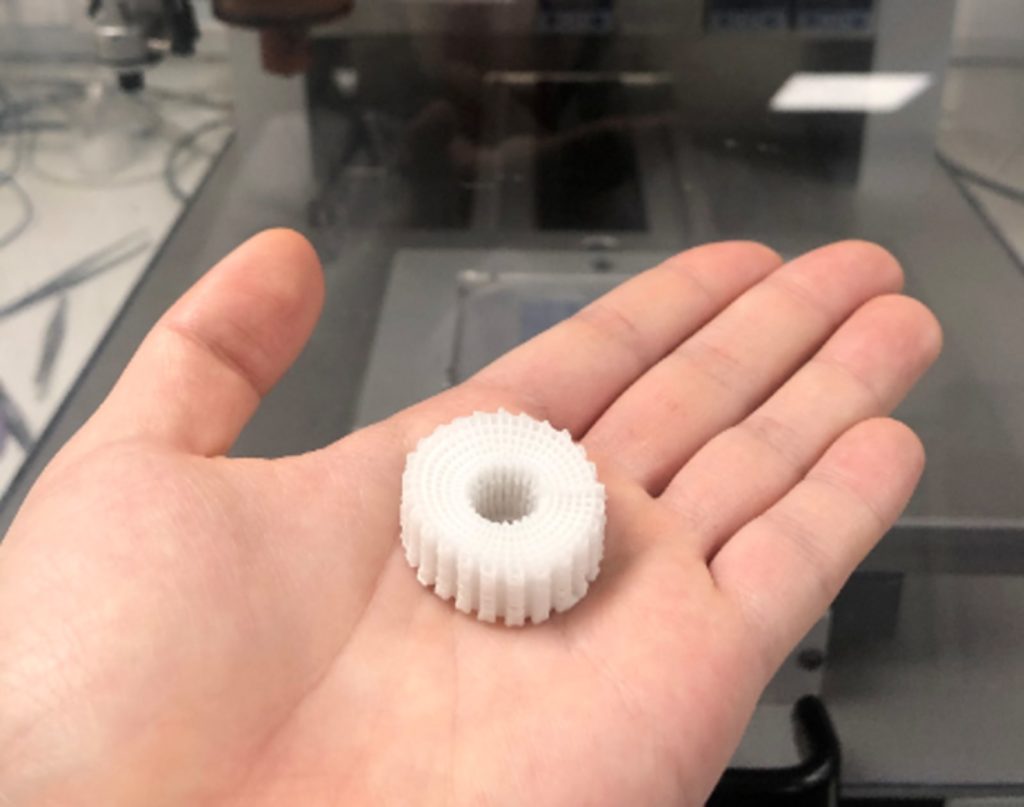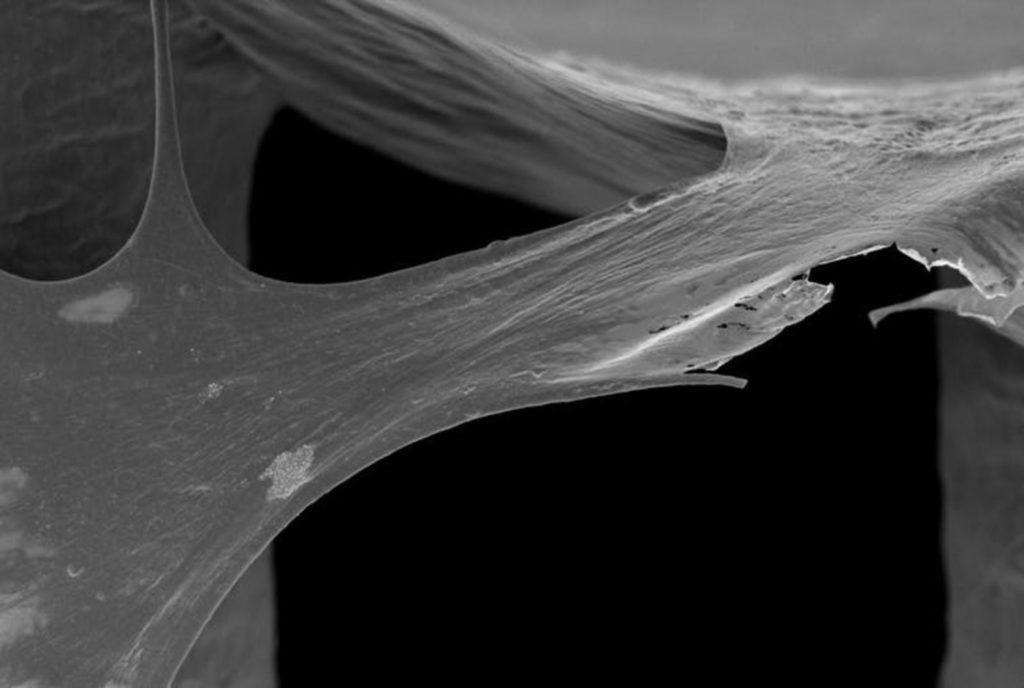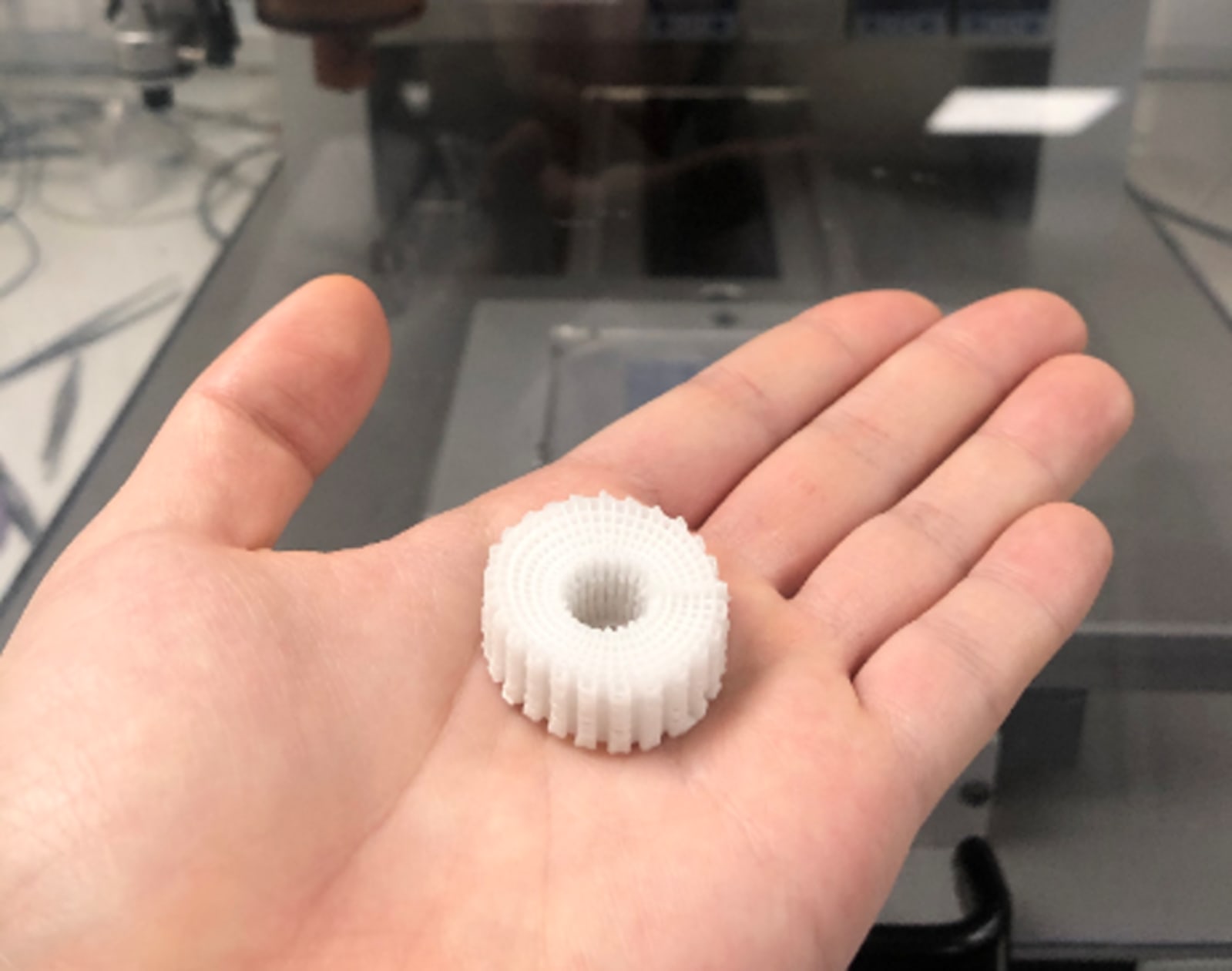
Researchers at the University of Manchester have developed 3D-printed ‘bone bricks’ as a cost-effective method of repairing shattered limbs that are a result of blast explosions.
These bone bricks are designed to click together like Lego bricks, creating a personalized fit for blast victims at a time of critical need at Syrian refugee camps.
Thousands of bomb blast survivors suffer jagged bone breaks which are almost impossible to fix. Lacking access to sophisticated orthopedic surgery at fully equipped hospitals, refugees are limited to infection-ridden camps with often untrained medics, making amputation the most likely outcome. Experts estimate that 100,000 Syrians have been affected by significant bone loss to date, resulting in over 30,000 amputations. Prosthetics are not available or suitable for every amputee.
Current bone repair techniques have their limitations. One method involves the harnessing of the limb in an external fixation device (a fixator) or frame (Ilizarov apparatus), enabling the bone tissue to slowly reconnect. This procedure is time-consuming, medically complicated, and not always effective. Problems often arise from metal piercing through skin and soft tissue to connect the fixator or cage to the bone. Another process involves the placement of a pin or plate implant to stabilize the bone gap and allow the tissue to regenerate.
With complex orthopedic surgery unavailable at refugee camps, a surgeon may suggest bone grafting, which involves using transplanted bone to rebuild shattered bones. However, the constant risk of infection at refugee camps makes successful bone grafts improbable.
This is where the newly conceived 3D-printed bone bricks come in. The treatment uses medical scaffolds made of polymer and ceramic materials, which can be clicked together to create a temporary structure that perfectly fills the bone gap caused by the blast injury. These bone bricks would have all the support of a normal bone in compression, while inducing the formation of new bone tissue around the structure. As the bone regenerates, the bricks dissolve. Each of these degradable bricks has pores containing antibiotic ceramic paste, which combats infection in a remarkably practical way during the healing period.

This limb-salvaging solution uses low-cost 3D-printing technology and can be executed in a relatively straightforward manner. All a clinician has to do is piece together a collection of ready-made bricks to create a custom-fit structure for a particular defect. The treatment is expected to cost less than USD$245 (GBP£200) for a typical 100mm fracture injury, as opposed to other methods which can cost anywhere from $330 to $1,230 (£270 to £1,000).
Read more at ENGINEERING.com

